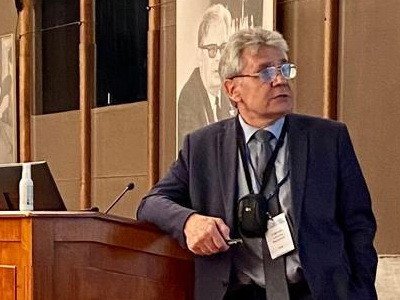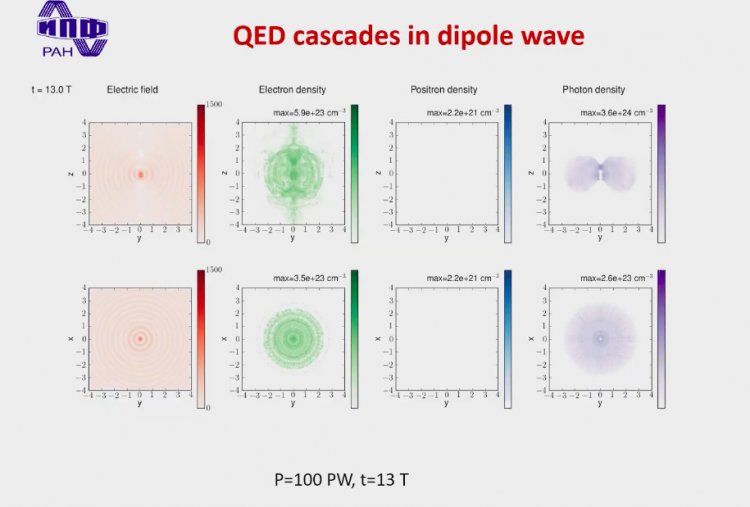3On June 30th, 2021, Academician Alexander Mikhaylovich Sergeev, President of the Russian Academy of Sciences, delivered a scientific presentation at the Joint Institute for Nuclear Research in Dubna.
Superheavy elements are considered today as a tool for obtaining particles from the vacuum, literally from the void. Physical theories posit that a strong electric field in vacuum can produce a particle pair – an electron and a positron, that is, a particle and an antiparticle. So far, no one has been able to produce an electron-positron pair in vacuum using an electric field. Yet, scientists are by no means sitting idle. One experimental way to achieve this is to use the NICA collider that is now under construction in Dubna, scheduled to start up in 2023.
The second version of the birth of an electron-positron pair from vacuum was explained by Alexander Sergeev, the President of RAS, in a research report delivered at an international conference in Dubna: a strong electric field can be created using a powerful laser. “State-of-the art ultra-powerful laser complexes can become an alternative delivering a new compact technology of particle acceleration, generation of coherent X-rays and gamma rays.” Researchers at the RAS Institute of Applied Physics proposed a model of the development of cascades in a rotating electric field, describing distribution functions for particles and large-energy photons. By controlling coupling parameters, it is possible to create directed high-intensity gamma radiation.
The scientist stressed that for an electron-positron pair to be born, a petawatt laser in the range of 10 to 100 petawatts would be necessary. Alexander Sergeev proposed to consider the idea of establishing a large laser complex in Dubna for the development of these technologies in Russia. It is expected that its design will be undertaken by engineers once the construction of the NICA collider is completed.
“The emission of a large amount of gamma quanta breaks down the vacuum simplification procedure. Vacuum becomes more like a sufficiently dense dielectric. Today, it is important to understand what can be expected as a result of vacuum breakdown. Another important task is to be able to create such a configuration of antennas and phase mirrors as to imitate as close as possible the effect of a dipole wave. The point is that gamma radiation emitted by an electron travels not through vacuum but rather in the presence of a powerful laser field that violates the symmetry of the vacuum. A gamma quantum can break down into electron-positron pair. They end up in a powerful laser field. A certain cascade develops resulting in the production of new matter.”
From a presentation by Alexander Mikhailovich Sergeev
Join us to watch a recorded presentation of a research report by the President of the Russian Academy of Sciences, Alexander Mikhailovich Sergeev!
Photo: screenshot of the live broadcast























